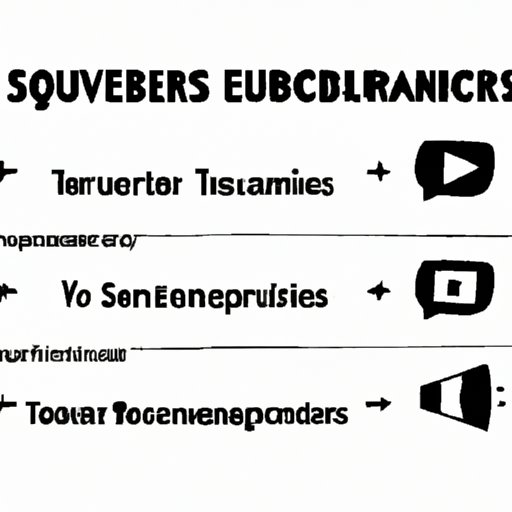
How Many Subscribers on YouTube to Make Money?
Are you among the millions of creators wondering how many subscribers on YouTube are needed to make money? If so, this article is for you. We’ll explore the minimum monetization requirements, the importance of engagement and retention, alternative revenue streams, success stories, advice for beginners, and ethics of monetization.
What are the Minimum Requirements for Monetization on YouTube?
Before you can monetize your YouTube channel, you must join the YouTube Partner Program. This program enables creators to earn money from ads served on their videos, among other benefits.
To join the Partner Program, your channel must have at least 1,000 subscribers and 4,000 hours of watch time over the past 12 months. Once you meet these requirements, you can apply for monetization through your YouTube dashboard.
If you’re just starting, don’t despair. Consistency is key, and with effort and dedication, you can reach the monetization threshold. Here are some tips:
- Create high-quality content that resonates with your audience
- Promote your channel through social media and other channels
- Collaborate with other creators in your niche
- Schedule your content to publish regularly and predictably
The Importance of Engagement and Retention
While meeting the minimum monetization requirements is essential, it’s not enough to sustain a successful channel. As a creator, you must focus on engagement and retention to attract and retain loyal viewers.
Engagement refers to the ways your viewers interact with your content, such as likes, comments, shares, and subscriptions. The more engagement you have, the more likely your content will be recommended to others, expanding your audience reach.
Retention measures how long viewers watch your videos. A higher retention rate indicates that your content is engaging, informative, or entertaining, and viewers are less likely to click away or abandon your channel.
Here are some tips for fostering a loyal following:
- Create a distinctive brand that resonates with your viewers
- Interact with your viewers through comments, live chats, and social media
- Promote community engagement through challenges, Q&A sessions, and giveaways
- Listen to feedback from your viewers and adjust your content accordingly
Successful creators like PewDiePie, MrBeast, and Emma Chamberlain have built a strong community around their content, fostering engagement and retention through their unique personalities and content style.
Alternative Revenue Streams
While ad revenue is the most common monetization method for YouTubers, it’s not the only one. Here are some non-advertising revenue streams to consider:
Merchandise sales: Creators can sell branded merchandise like t-shirts, mugs, and hats through platforms like Teespring, Shopify, and Amazon Merch. This method allows creators to earn money while building their brand and engaging with their fans.
Brand sponsorships: Brands and businesses partner with creators to promote their products or services to the creator’s audience. This method allows creators to earn money while providing value to their viewers, as long as the sponsored content is authentic and relevant to the channel’s niche.
Affiliate marketing: Creators can earn commissions by promoting products or services through affiliate links. This method requires a significant following to generate substantial income, but with strategic planning, it can be a valuable revenue stream.
Before pursuing alternative revenue streams, ensure they align with your brand and values, and consider legal and financial implications.
Success Stories
Many creators have achieved financial independence and personal fulfillment through YouTube. Here are some examples:
- Rachel and Jun: A channel dedicated to Japanese culture and lifestyle, which has grown to over 2 million subscribers and has built a sustainable business selling merchandise and digital products.
- D’Angelo Wallace: A commentator and cultural critic who has amassed over 1 million subscribers by creating informative and entertaining videos on popular culture and current events.
- Graham Stephan: A finance and real estate expert who has built a loyal following of over 2 million subscribers by providing educational and practical advice on personal finance and wealth building.
While each creator’s journey is unique, their success stories share a common thread- they created exceptional content, built a loyal following, and monetized their audience through various revenue streams.
Advice for Beginners
If you’re just starting on YouTube, setting realistic growth goals is crucial. It takes time and effort to produce quality content and attract a loyal audience. Here are some tips to stay motivated:
- Focus on your niche and target audience
- Develop a content strategy and schedule
- Invest in quality equipment and editing software
- Join online communities and connect with other creators
Learning more about YouTube monetization and growth strategies is essential for beginners. Resources like YouTube Creator Academy, Social Media Examiner, and VidIQ offer valuable insights and tutorials on creating and promoting content.
Ethics of Monetization
As a creator, it’s essential to maintain authenticity and transparency with your viewers while monetizing your content. Follow these tips:
- Disclose paid sponsorships and partnerships in your videos and descriptions
- Avoid misleading, deceptive, or harmful content
- Create content that provides value to your audience
- Beware of creator burnout and prioritize health and wellness
Conclusion
In conclusion, monetizing your YouTube channel requires meeting the minimum requirements, fostering engagement and retention, exploring alternative revenue streams, learning from successful creators, setting realistic growth goals, and maintaining ethical standards. By following these tips and investing in your content and viewers, you can turn your YouTube channel into a successful and fulfilling business.




